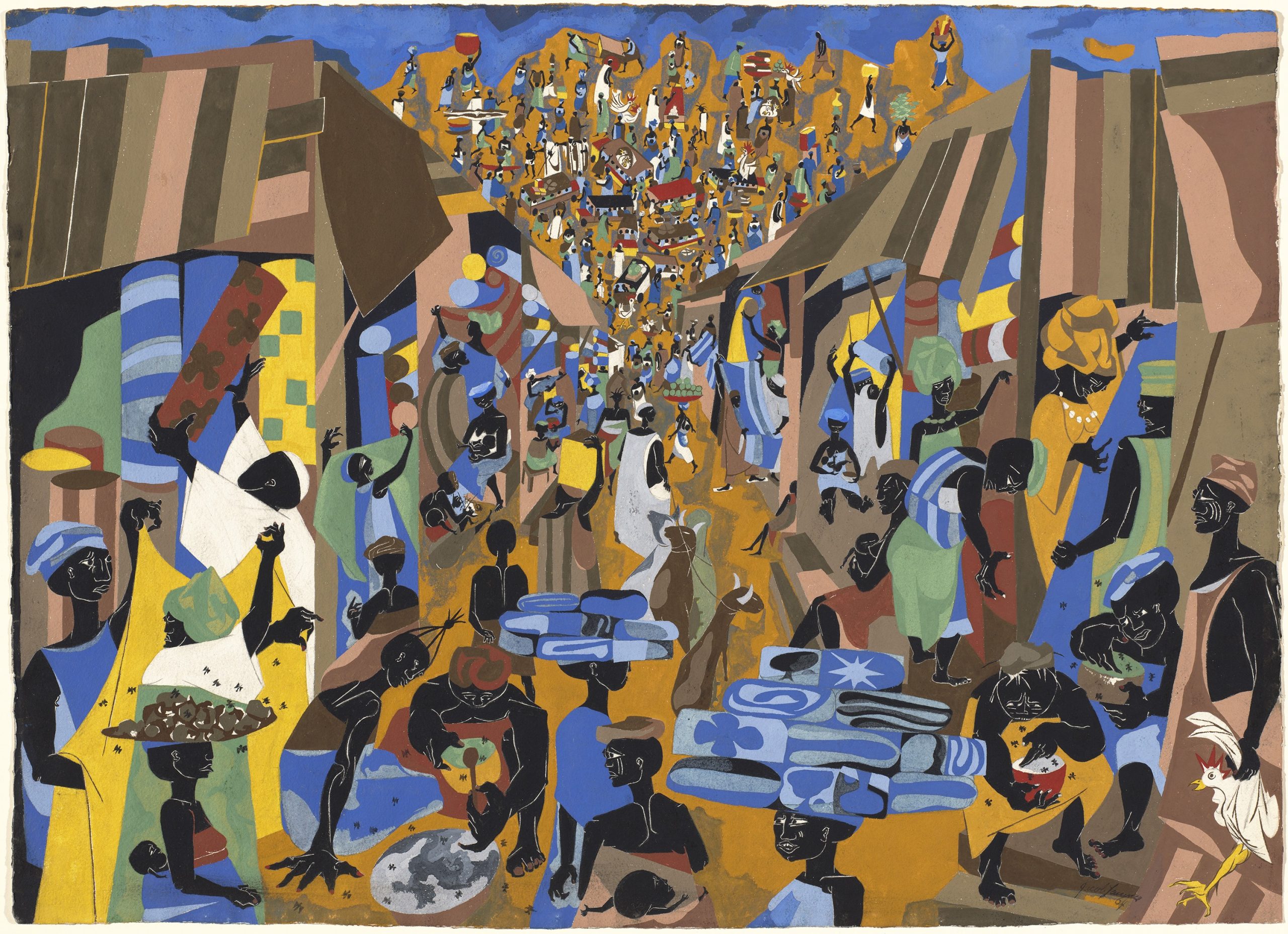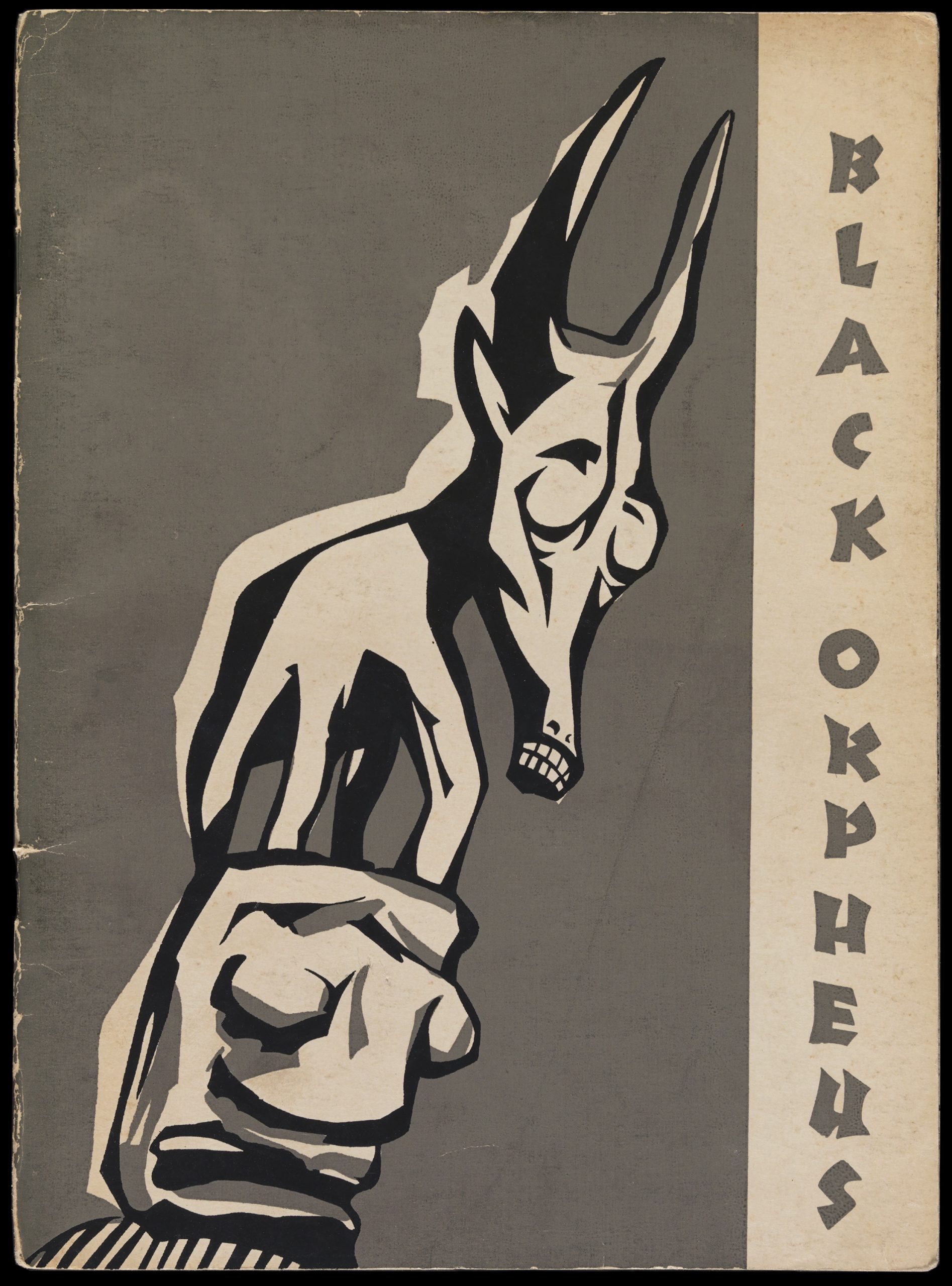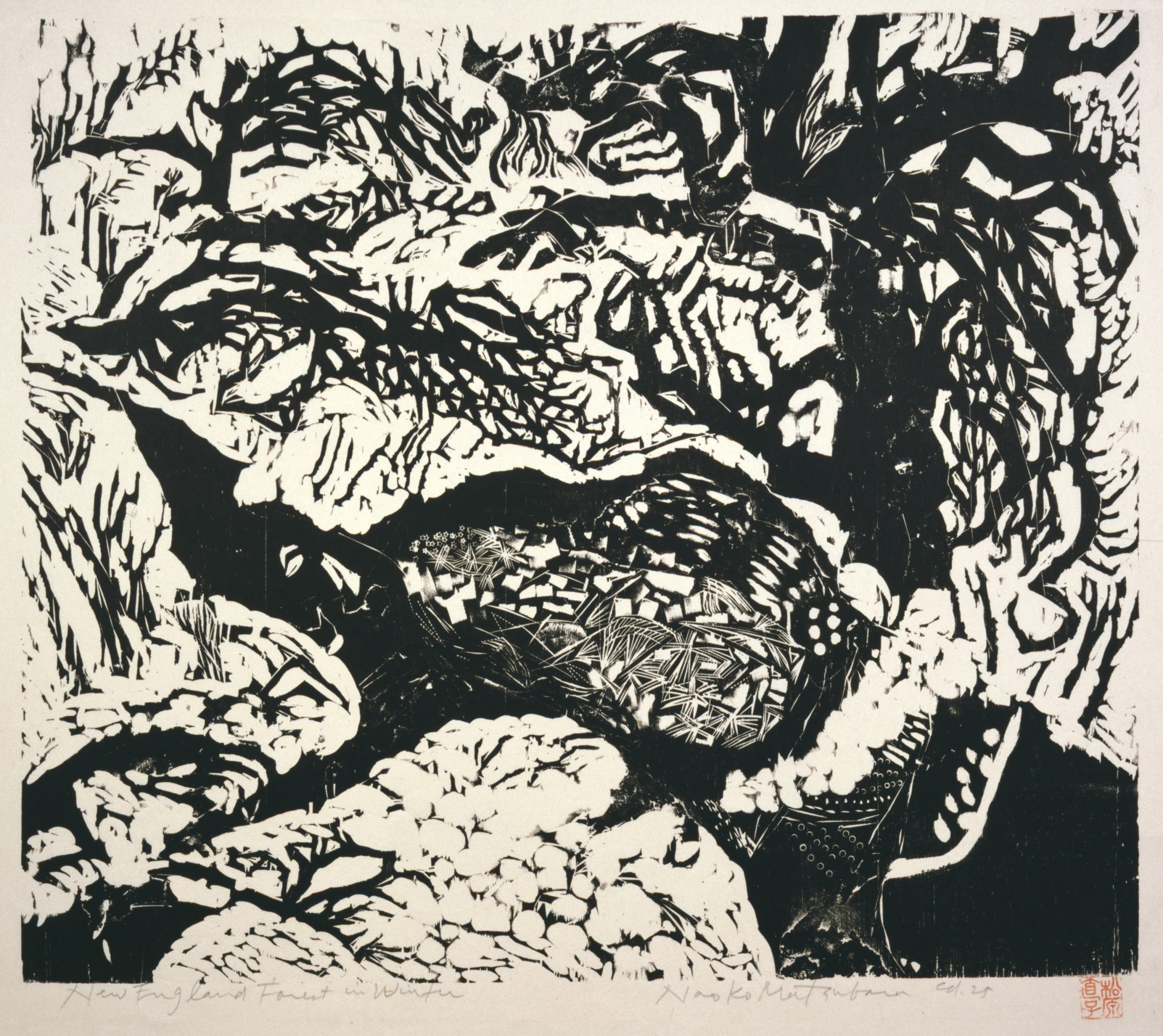In the 1960s, African American artist Jacob Lawrence (1917–2000) spent some time in Nigeria, resulting in a series of drawings and paintings named Nigeria, and collaborated with the renowned Mbari Artists and Writers Club.

This fall, two US museums, the Chrysler Museum of Art and the New Orleans Museum of Art, present a major exhibition of the artist’s works from that time in Nigeria. Titled Black Orpheus: Jacob Lawrence and the Mbari Club, the presentation is acclaimed as the first in-depth look at the international artists who were members of the club, many of whom Lawrence met during his extended stay in Nigeria in 1964. These artists, including Lawrence, contributed to Black Orpheus, a radical arts and culture journal published in Nigeria between 1957 and 1975.
Lawrence and his wife, Gwendolyn Knight Lawrence, first travelled to Africa in 1962, starting in Nigeria, to present an exhibition of work from several of his series: Migration, Under the Black Belt, and War. His plan was to introduce Africans to moments in African American history that he hoped would resonate with them, featuring themes of joy and sorrow, oppression and triumph. While there, he met with artists and writers affiliated with the legendary club, such as Bruce Onobrakpeya, Vincent Kofi, Wole Soyinka and Chinua Achebe, who were themselves exploring and critiquing Western art traditions and publishing their work in the groundbreaking journal.
In 1964, the Lawrences returned to Nigeria for a nine-month stay, again meeting with contemporaries— and during which time he finalized his more than 25 works Nigeria series. In this series, he explored themes of spirituality and community, often centred on the marketplace, a crucial gathering place in Nigerian culture. After returning to the United States, this series was presented at his New York dealer’s gallery in 1965—but has not been shown together in its entirety since then.

Black Orpheus: Jacob Lawrence and the Mbari Club is curated by Kimberli Gant, Ph.D., the Chrysler Museum of Art’s former McKinnon curator of modern and contemporary art who was named the curator of modern and contemporary art at the Brooklyn Museum earlier this year, and by Ndubuisi Ezeluomba, Ph.D., the New Orleans Museum of Art’s Françoise Billion Richardson curator of African art. The first presentation of the exhibition is showing at the Chrysler Museum from October 8, 2022 to January 8, 2023, and then it will travel to the New Orleans Museum of Art from February 10 to May 7, 2023, followed by the Toledo Museum of Art from June 3 to September 3, 2023.
According to Kimberli Gant, “This exhibition explores an incredible moment in the global exchange of ideas, when people and countries around the world were fighting for independence from colonialism and when the civil rights movement was achieving success in the United States. Traveling to Africa twice in the early 1960s, Jacob Lawrence connected to a vibrant crosscurrent of political and social ideas circulating there, as richly illustrated by the writing and art featured in Black Orpheus. Those artists, in turn, were adapting and integrating modernist theories of art with their local styles, customs, and life experiences. The results can be seen in Lawrence’s less-well-known Nigeria series—and in the remarkable array of works in this show that represent the global south during a period of transition.”

The exhibition is organized into five sections to guide viewers from the singularity of Lawrence’s series to the diversity of the Mbari Club artists and then further into the artists working in the global south during this period. The first section shows the artist’s representation of the country through depictions of its splendid markets, complex communities, and permeable spiritual practices. The section also includes archival images of Lawrence and his wife during their travels and original correspondence from Lawrence about his experiences. The second section presents the Artists of the Osogbo art movement who are less well-known to American audiences, including Duro Ladipo, Twins Seven-Seven, Muraina Oyelami, Asiru Olatunde, Jacob Afolabi, and Adebisi Akanji, all of whom were featured in Mbari Club galleries and in Black Orpheus journals. These artists learned a range of artistic traditions—printmaking, batik textiles and painting—from older generations of both non-Western and Western artists and inspired younger generations.
The section on the Zaria Art Society focuses on a small group of Nigerian modernists like Uche Okeke, Demas Nwoko, and Bruce Onobrakpeya. They met at the National College of Art & Technology and developed a philosophy called “natural synthesis,” where the artists incorporated local aesthetics and cultural traditions with Western-style art techniques to create a new modern art form. Their work also provided illustrations for short stories featured in Black Orpheus.
The exhibition’s final two sections draw out artistic themes being explored by artists elsewhere on the African continent—and in other parts of the world that were featured in the Black Orpheus journals. These are names such as the Kenyan artist Hezbon Owiti, Mozambican artist and poet Malangatana Ngwenya, Ghanaian artist Vincent Kofi, El-Salahi and Ahmed Shibrain, two members of the Sudanese Khartoum School, and the Ethiopian artist Skunder Boghossian. Other selected works show the influence and importance of Black Orpheus and the Mbari Artists and Writers Club in the broader exchange of ideas with the global south. Works from artists such as Avandrish Chandra from India, Genaro de Carvalho and Agnaldo Manoel dos Santos from Brazil, and William H. Johnson from the United States, highlight the commonalities of people around the world in the fight for freedom.
A full-colour catalogue published by Yale University Press will accompany the exhibition. It includes essays by the exhibition curators and preeminent scholars, including Leslie King Hammond and Peter Probst, and a new generation of scholars such as Suheyla Takesh, Katrina Greven and Iheanyi Onwuegbucha.




